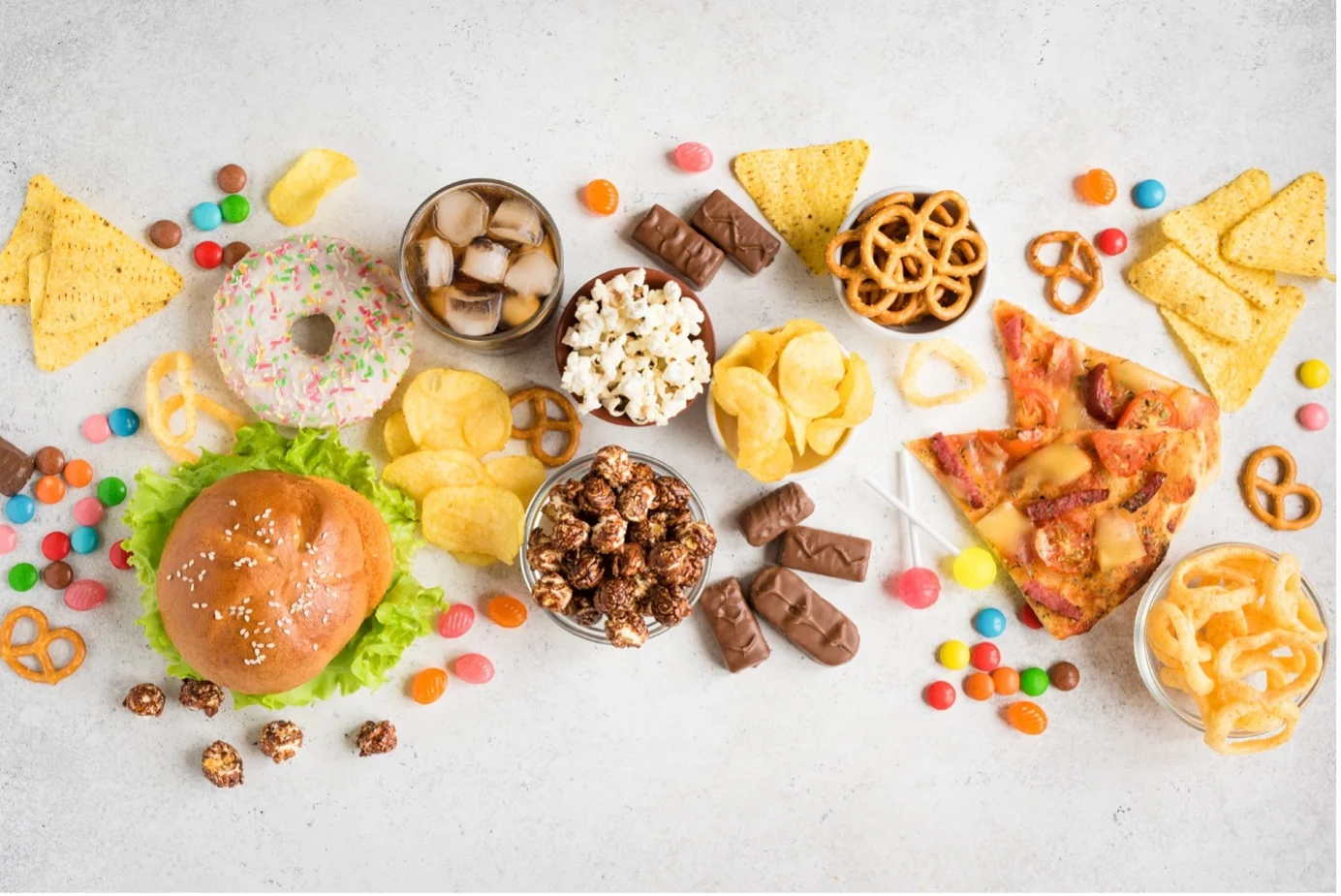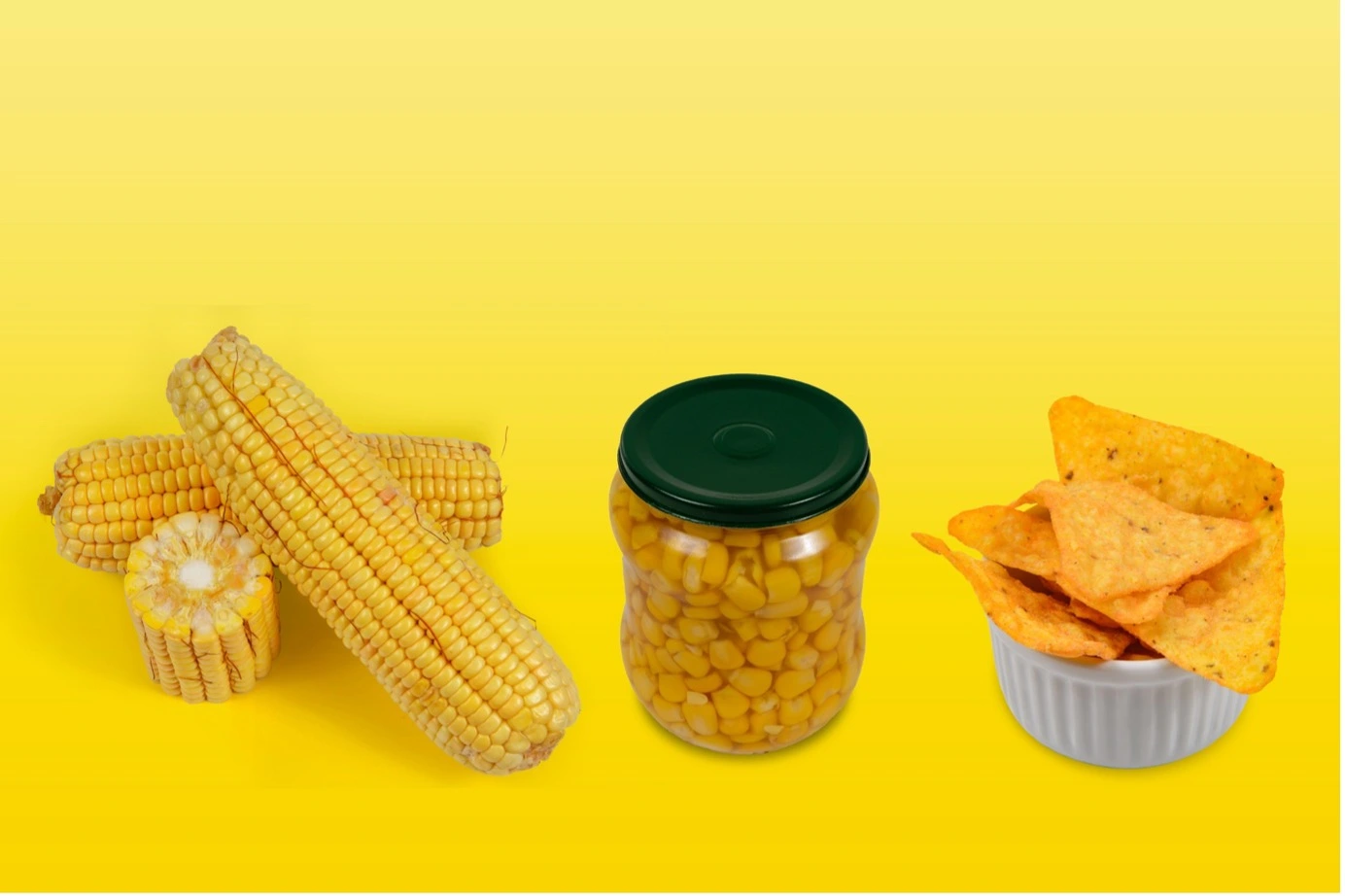What is ‘ultra-processed food’?
Ultra-processed food, UPF, is a term that comes from the NOVA classification system (Monteiro et al 2016). This was created in an attempt to categorize foods on their processing, rather than nutrient content, which Professor Carlos A. Monteiro at the University of Sao Paolo in Brazil described as “understated” and “neglected” in dietary recommendations. The NOVA system has four categories of food processing:
1. Unprocessed or minimally processed foods.
As the name suggests, the first NOVA group consists of foods which are unprocessed or minimally processed. For unprocessed foods, this means fresh products which are edible such as seeds, fruits, vegetables and legumes as well as animal products such as muscle (meat), offal, eggs, and milk. Minimally processed foods are the same foods which have been altered, usually in order to extend the shelf life of said product, or the removal of inedible parts of the product. This can include drying, crushing, grinding, roasting, boiling, pasteurisation, and forms of chilling such as freezing. This does not include any processes that adds substances to the food in any way.
2. Processed culinary ingredients.
The second group in the NOVA category consists of ingredients that are generally used in the preparation of group 1 foods in order to make them more palatable and ready for consumption but are generally not consumed alone. This includes salt, honey, sugar, and cooking oils.
3. Processed foods
Group three is ‘processed’ foods which are group 1 foods which have been combined with group 2 foods, and typically consist of two or three ingredients. This is usually done to preserve the product, such as salting, smoking, and fermentation. For example, dried and salted meats, canned and bottle vegetables, pickled foods, and alcoholic drinks which have underdone fermentation.
4. Ultra-processed food and drink products
Ultra-processed foods (UPF) are formulations with typically five or more ingredients. These ingredients can be found in group 3, such as sugar, oils, fats, salt, antioxidants, stabilisers, and preservatives, but also ingredients not commonly used in culinary preparations such as hydrogenated and interesterified oils, maltodextrin, high fructose corn syrup, casein, whey, and lactose. Some ingredients are only found in group 4, such as food colouring, stabilisers, flavours and flavour enhancers, and non-nutritive sweeteners. Ultra processed foods are created to be easy to eat or drink quickly or with minimal preparation, and are commonly hyper-palatable, meaning that they are very tasting and appealing, which can lead to passive overconsumption.
So, the NOVA classification categorises food based on the level of processing the food has undertaken, and reports which incorporate this classification system (Pan American Health Organisation, 2015) generally call for a reduction in processed food intake (group 3) and the avoidance of ultra-processed food (group 4). This is generally promoted through the lens of reducing the public health issues of obesity and the metabolic syndrome. But does the research show that NOVA is equipped to do this?
NOVA and public health
Dietary guidelines across the globe arise from the identification of dietary contributors to disease (such as diabetes or obesity) through epidemiological research, which is then validated in further research (Gibney et al., 2017). One issue with the claim of NOVA advocates is that there is little to no evidence that food processing constitutes a risk to consumer health, with the exception of trans fats (Mensink and Katan, 1990). Through nutritional epidemiology, it is well established that nutrients and overall energy intake are linked to these non-communicable diseases, and no mechanism has been proposed by which the processing of food adds to this understanding. Furthermore, research is mixed as to the actual link between UPF and obesity, with some showing a relationship between the two (Tavares et al. 2012) and others showing no effect when confounders of obesity were included in the analysis (Adams and White, 2015). In their appraisal of the NOVA system, Gibney et al. (2017) comment that for other diseases where there is no link to overall energy intake, but to specific dietary components, the NOVA system cannot specify nutrients at the individual level and therefore offers “no value”.
Limitations of NOVA
As mentioned above, the NOVA system aims to classify foods in an attempt to reduce obesity. The published literature on UPF indicates that they may be hyperpalatable and have a lower capacity to induce satiety (Fardet, 2016; Holt et al. 1995), making this link feasible. However, this evidence is sparse and there is no research directly comparing minimally processed foods with processed and ultra-processed counterparts on a calorie-for-calorie basis.
Another issue with the blanket aim of reducing UPF is that some foods become processed in the reduction of calories such as low calorie and no calorie options. Non-nutritive sweeteners have been shown to reduce energy intake (Laviada-Molina et al. 2020), but foods which include these, such as aspartame, are typically classified as an UPF. This is in direct contrast with the aim of the NOVA system, as although these examples would be as processed or ultra-processed, they are likely to contain less calories that the less processed versions.
Whilst there is evidence that UPF are less micronutrient rich, and that the more UPF one consumes, the fewer micronutrients they consume (Matinez-Steele et al 2017)., enriched and fortified foods are an important part of the diet for many. For example, for those living in the northern hemisphere, fortifying food with Vitamin D is fundamental in ensuring the population does not become deficient (Huotari and Herzig, 2008).

Concluding thoughts
UPF have garnered a lot of attention in the news recently, with lots of media coverage of two studies presented at the 2023 European Society of Cardiology Congress on 25-28 August (Pant et al, 2023; Qu et al 2023) which suggest a link between UPF and cardiovascular events. We will not discuss why taking results presented at conferences at face value, nor the results of single studies, is inappropriate (see EUFIC’s article on these studies). However, it is worth saying that by following good principles of nutrition, and not focusing on the level of processing a food has undergone, will likely reduce the number of UPFs in your diet and generally improve overall diet quality. By consuming a wide variety of whole foods, with complex carbohydrates which contain fibre, colourful and seasonable fruits and vegetables which provide a variety of micronutrients, and high quality protein, your diet and health will likely improve, regardless of the inclusion of ‘processed’ foods.
References
Adams, J., & White, M. (2015). Characterisation of UK diets according to degree of food processing and associations with socio-demographics and obesity: cross-sectional analysis of UK National Diet and Nutrition Survey (2008-12). The international journal of behavioral nutrition and physical activity, 12, 160.
Fardet A. (2016). Minimally processed foods are more satiating and less hyperglycemic than ultra-processed foods: a preliminary study with 98 ready-to-eat foods. Food & function, 7(5), 2338–2346.
Gibney, M. J., Forde, C. G., Mullally, D., & Gibney, E. R. (2017). Ultra-processed foods in human health: a critical appraisal. The American journal of clinical nutrition, 106(3), 717–724.
Holt, S. H., Miller, J. C., Petocz, P., & Farmakalidis, E. (1995). A satiety index of common foods. European journal of clinical nutrition, 49(9), 675–690.
Huotari, A., & Herzig, K. H. (2008). Vitamin D and living in northern latitudes–an endemic risk area for vitamin D deficiency. International journal of circumpolar health, 67(2-3), 164–178.
Laviada-Molina, H., Molina-Segui, F., Pérez-Gaxiola, G., Cuello-García, C., Arjona-Villicaña, R., Espinosa-Marrón, A., & Martinez-Portilla, R. J. (2020). Effects of nonnutritive sweeteners on body weight and BMI in diverse clinical contexts: Systematic review and meta-analysis. Obesity reviews: an official journal of the International Association for the Study of Obesity, 21(7), e13020.
Martínez Steele, E., Popkin, B. M., Swinburn, B., & Monteiro, C. A. (2017). The share of ultra-processed foods and the overall nutritional quality of diets in the US: evidence from a nationally representative cross-sectional study. Population health metrics, 15(1), 6.
Monteiro CA, Cannon G, Levy R, Moubarac JC, Jaime P, Martins AP, et al. NOVA. The star shines bright: World Nutrition, 2016;7:28–38.
Pan American Health Organization. Ultra-processed food and drink products in Latin America: trends, impact on obesity, policy implications. (2015). Available online at: https://iris.paho.org/bitstream/handle/10665.2/7699/9789275118641_eng.pdf?sequence=5&isAllowed=y (accessed 13th September 2023).
Pant A et al., (2023) Association of ultra-processed foods with cardiovascular disease and hypertension in Australian women. Presentation at the European Society of Cardiology Congress 2023.
Qu Y et al., (2023) Ultra-processed food consumption and cardiovascular events risk. Presentation at the European Society of Cardiology Congress 2023.
Tavares, L. F., Fonseca, S. C., Garcia Rosa, M. L., & Yokoo, E. M. (2012). Relationship between ultra-processed foods and metabolic syndrome in adolescents from a Brazilian Family Doctor Program. Public health nutrition, 15(1), 82–87.

